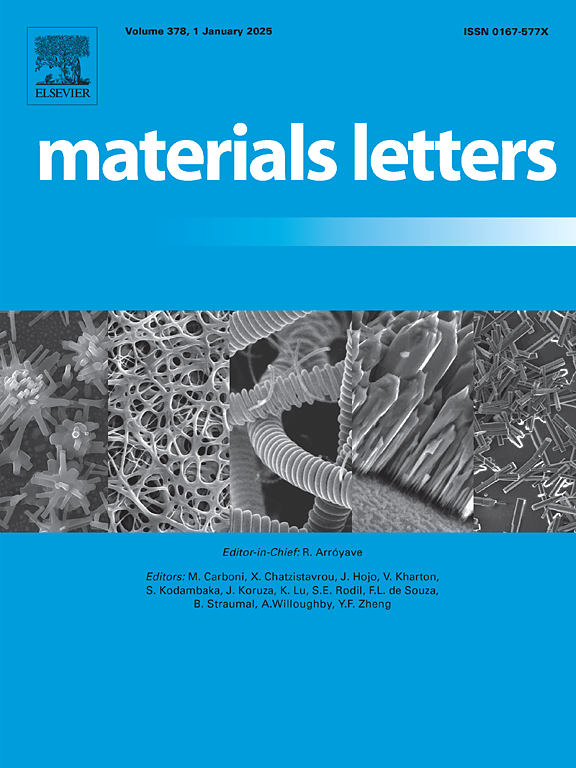Influence of argon gas flow rate on the porosity of AA5087 aluminum alloy walls made by metal inert gas wire and arc additive manufacturing
IF 2.7
4区 材料科学
Q3 MATERIALS SCIENCE, MULTIDISCIPLINARY
引用次数: 0
Abstract
The paper investigates the impact of the argon shielding gas flow rate on the porosity of metal inert gas wire and arc additive manufactured (MIG-WAAM) AA5087 aluminum alloy walls. Gas flow rates from 6 to 14 l/min were utilized for deposition of the walls. The porosity level was evaluated by light microscopy (LM) and computed tomography (CT). An increase in the gas flow rate decreased the porosity in deposited walls from 4.46 % to 0.60 %. CT results followed the same trend, decreasing porosity from 7.29 % to 0.70 %. Hydrogen content that strongly affects the porosity of aluminum alloys increased with gas flow rate from 49 ppm to 101 ppm. This behaviour is associated with rapid solidification of molten pool caused by forced convection and air recirculation at higher gas flow rates. The detected pores ranged in size from 54 μm to 3.3 mm and in sphericity from 0.40 to 0.65.
氩气流量对金属惰性气体丝和电弧增材制造AA5087铝合金壁气孔率的影响
研究了氩气保护气体流量对金属惰性气体丝和电弧添加剂(MIG-WAAM) AA5087铝合金壁孔隙率的影响。气体流速为6 ~ 14l /min,用于壁面沉积。通过光学显微镜(LM)和计算机断层扫描(CT)评估孔隙度水平。随着气体流速的增加,沉积壁面孔隙度由4.46%降低到0.60%。CT结果也遵循同样的趋势,孔隙度从7.29%降至0.70%。随着气体流量的增加,氢气含量从49 ppm增加到101 ppm,对铝合金孔隙率有较大影响。这种行为与在较高气体流速下由强制对流和空气再循环引起的熔池快速凝固有关。检测到的孔隙大小为54 μm ~ 3.3 mm,球形度为0.40 ~ 0.65。
本文章由计算机程序翻译,如有差异,请以英文原文为准。
求助全文
约1分钟内获得全文
求助全文
来源期刊

Materials Letters
工程技术-材料科学:综合
CiteScore
5.60
自引率
3.30%
发文量
1948
审稿时长
50 days
期刊介绍:
Materials Letters has an open access mirror journal Materials Letters: X, sharing the same aims and scope, editorial team, submission system and rigorous peer review.
Materials Letters is dedicated to publishing novel, cutting edge reports of broad interest to the materials community. The journal provides a forum for materials scientists and engineers, physicists, and chemists to rapidly communicate on the most important topics in the field of materials.
Contributions include, but are not limited to, a variety of topics such as:
• Materials - Metals and alloys, amorphous solids, ceramics, composites, polymers, semiconductors
• Applications - Structural, opto-electronic, magnetic, medical, MEMS, sensors, smart
• Characterization - Analytical, microscopy, scanning probes, nanoscopic, optical, electrical, magnetic, acoustic, spectroscopic, diffraction
• Novel Materials - Micro and nanostructures (nanowires, nanotubes, nanoparticles), nanocomposites, thin films, superlattices, quantum dots.
• Processing - Crystal growth, thin film processing, sol-gel processing, mechanical processing, assembly, nanocrystalline processing.
• Properties - Mechanical, magnetic, optical, electrical, ferroelectric, thermal, interfacial, transport, thermodynamic
• Synthesis - Quenching, solid state, solidification, solution synthesis, vapor deposition, high pressure, explosive
 求助内容:
求助内容: 应助结果提醒方式:
应助结果提醒方式:


